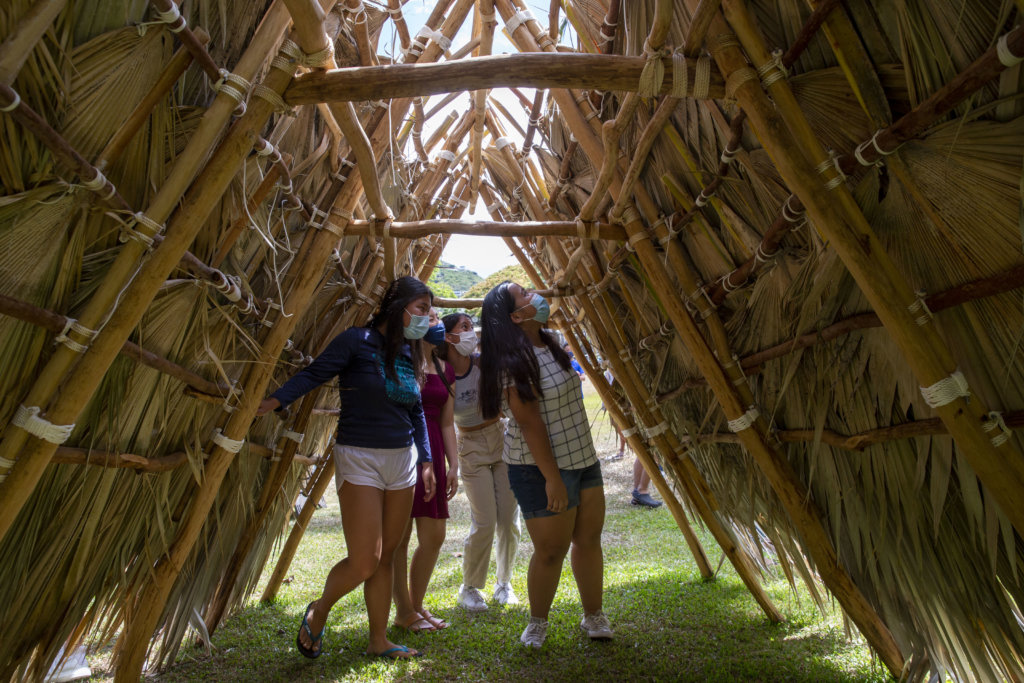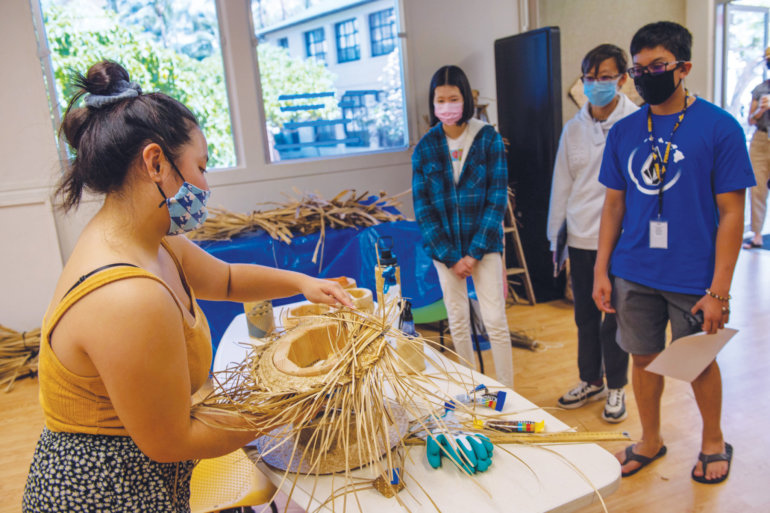During the past school year, Academy students explored such topics as artificial intelligence, lauhala weaving and the Punahou Archives as part of a non-traditional Explorations pilot program. At the culmination of the six-week courses, students shared what they learned during a Share Fair with fellow students.
In one course called “Sharks!” students developed an interactive app to teach others the importance of sharks and the harm of overfishing. “Watching students come up with creative ways of demonstrating concepts and connecting with users, often seeing solutions that I myself may not have come up with, was very fulfilling,” said Sam Durham, a Punahou Design Technology and Engineering faculty member who taught the course.
During the “Joy of Reading,” book lovers read poetry, short stories, novels, graphic novels and nonfiction, sharing excerpt with classmates. “They selected very interesting and thought-provoking readings,” said Information Specialist Susan Clark, a librarian with the Cooke Library Learning Commons who facilitated the course. “As a librarian it raised my awareness of what teenagers like to read.”
– By Rachel Breitweser ’03 Nakamura
Students Build Traditional Hale

As part of the Explorations course, Ho‘onoho Kauhale, Academy students built a traditional Hawaiian hale or house, now situated near Mamiya Science Center. Led by instructors Ke‘alohi Reppun ’99, director of Punahou’s Kuaihelani Learning Center, and faculty Kaniela Lyman-Mersereau ’05,
seven students learned the art of hale building, working with natural materials to lash and thatch the structure.
“Our students went into the mountains and picked all of the strawberry guava wood that we used to build the hale,” Reppun said. “We did a lot of rope work, utilizing theory, measurements, applied math and physics to figure out the size and work out other elements.”
The hale remains in the Academy for now, providing a shady, outdoor area for students, as well as representing a sense of place.
“It’s very structurally sound, but we could take her down at any point and unlash her, then re-thatch and rebuild her,” Reppun said. “We can do all kinds of different things that will offer lessons for kids in coming years. Right now, it’s a functional shade space, but there are a couple of things that make this hale really important.”
While Punahou has an abundance of architecturally beautiful buildings in the Academy, they’re all Western, Reppun said. “As we move in a direction of remembering where we’ve come from and embracing our past, this small symbol of a traditional hale can do a lot for what it is that we imagine for our future. It’s a visual presence that reminds us that we’re
in Hawai‘i.”
– By Diane Seo ’85

